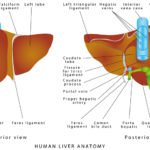Once again reminding us that we live in a toxic world, a new study just determined that the chemicals found in common household items like upholstered furniture, carpeting, paper, and food-packaging materials may cause infertility. The problematic substances belong to a class known as perfluorinated chemicals (PFCs), which have non-stick and heat resistant qualities that make them useful in numerous medical, commercial, and industrial applications. PFCs seem to be omnipresent — they’re the key ingredient in Teflon, Scotchguard, Stainmaster, and Goretex, for instance. They’re also commonly added to cosmetics, clothing, shampoos, dental products, medical products, nail polish, and used in numerous medical applications.
Though industry may celebrate the functionality of PFCs, the dark side of these chemicals is that they have a highly toxic impact on humans, animals, and the environment. In fact, some sources believe PFCs to be the most noxious chemicals ever produced — worse than DDT and PCBs — as some forms of PFCs never degrade, remaining in the environment forever. Frighteningly, a study involving more than 69,000 people found that more than 90 percent of the US population has elevated levels of PFCs in their blood. PFCs show up in lakes, in public water supplies, in wildlife, and in extremely high concentrations in pets (twice the level typically measured in humans, probably from chew toys and pet beds coated with PFC-based fire retardants.)
In the latest study, out of UCLA, scientists tested the blood of 1240 women for PFCs. The levels found varied from 6.4 nanograms per milliliter of blood to 106. The researchers found that the women with levels higher than 26 nanograms/milliliter were at least 70 percent more likely to be infertile, meaning that they took a year or longer to conceive. The study authors make clear that while high levels of PFCs may affect a woman’s fertility, men with high PFC levels may have lower sperm count, and so their fertility may also be affected.
But as is so often the case with toxic substances, the ugly effects of PFCs go far beyond this one problem. As study author Chunyuan Fei says, “These chemicals may have a variety of toxic effects on the liver, immune system and developmental and reproductive organs.” For one thing, it’s known that PFCs can pass from mother to child through the placenta, and so now research is underway to determine if the chemicals cause birth defects. A 2004 study at the University of Massachusetts in Amherst found PFCs to be pervasive in the breast milk of nursing mothers — yet another way young kids can absorb the toxins.
A long, hair-raising list of diseases has been linked to PFCs, including testicular, breast, liver, and prostate cancers and hypothyroidism. In fact, studies of workers who merely handle PFCs at various manufacturing plants have found twice the incidence of prostate cancer among those workers, as well as elevated rates of leukemia and cancers of the urinary tract pharynx, and kidney. Other studies have linked the chemicals to shrinkage of internal organs, reduced birth weight, liver toxicity, immune system impairment, cognitive impairment, allergies, and hormonal changes.
In short, these are very deadly chemicals; they’re everywhere; and they’re going to be hanging out in the environment far, far, far into the future. Though seven major manufacturers including Dupont and 3M agreed to follow EPA recommendations to cut PFC production by 95 percent by the year 2010, PFC emissions from manufacturing continue to be belched into the air, and the ban is strictly voluntary at that. Many products manufactured before 2010 still have PFC content, and unless legislation bans PFCs outright, they will continue to be used in many products. (Unfortunately, the planned reductions come only after years of cover-ups by companies like Dupont, which paid a $16.5 million fine in 2005, the largest in EPA’s history, for hiding information about PFC contamination from residents living near manufacturing plants in Ohio and West Virginia.)
The best protection is to stay miles away from non-stick cookware, stain-resistant fabrics and furniture, and food packaged in grease-repellent wrappings (for instance, pizza boxes or fast-food packaging). The stuff is so omnipresent that you might overlook possible contamination — from water-repellent coats and jackets, for instance, or from your poncho or tent or water-resistant camping gear, from your car seats, from shoes, umbrellas, or luggage. Check out your toothpaste, hair-care products, dental floss, and cosmetics. If you notice the word “fluoro” in the ingredient list, you might want to toss the stuff right into the garbage.
And of course, detox regularly. No matter how careful you are, just breathing the air, sitting on the grass, drinking a glass of water, or brushing your teeth can expose you to these toxins.
:hc











